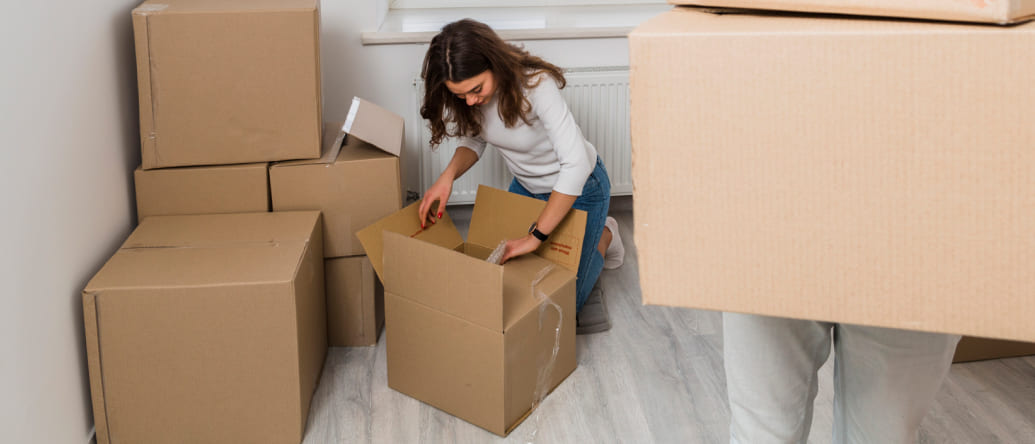
After Moving Checklist: 8 Essential Steps for a Smooth Transition
Things To Do After the Move: A Fresh Start Awaits!

Moving to a new home signifies a significant milestone, characterized by a blend of excitement and the invigorating prospect of a fresh start. Yet, beyond the initial thrill of unpacking and settling in, lies a pivotal period—the post-move phase. In this article, we delve into the often-overlooked “to-dos,” ensuring a comprehensive approach to this crucial juncture. Whether you’re a seasoned mover or embarking on your first relocation, let’s uncover the key actions that set the stage for a successful and comfortable new chapter in your life.
Post-Move Home Maintenance Guide
Settling into a new home can feel overwhelming, but a structured after moving checklist ensures a seamless transition. Start by changing locks for security, setting up utilities, and updating your address. Unpack methodically, secure furniture, and test safety devices. These essential steps help you settle in stress-free!
Steps #1: Change house locks
Changing the locks when moving into a new home is a fundamental step in enhancing security and ensuring your peace of mind. The unknown factor of who may have access to your home necessitates this proactive measure.
By taking control of your home’s security through the installation of new locks, you not only protect your privacy but also create a foundation for a safe and secure living environment. Consider it an investment in the well-being of your household, providing the comfort and confidence needed to fully enjoy your new home.
Steps #2: Unpack methodically
To instill order into the unpacking process, begin by placing boxes in their respective rooms. This initial step lays the groundwork for a systematic and efficient unpacking experience. Each box finds its way to the space where its contents belong, minimizing confusion and making the overall process more manageable.
Once boxes are in their designated rooms, take a room-by-room approach to unpacking. This focused strategy ensures that each space is fully set up before moving on to the next. It allows you to prioritize areas based on their importance and functionality, creating a sense of order in the midst of the unpacking process.
Steps #3: Protect children and pets

Moving into a new home is an excellent opportunity to establish a safe and secure environment for your family, especially the little ones and furry friends. Implementing these safety measures from the start sets the tone for a worry-free living space.
- Furniture anchoring
Secure heavy furniture, such as dressers and bookshelves, to the wall to prevent tipping. This precaution is crucial to avoid accidents, especially in homes with children who might attempt to climb or explore unstable furniture. - Safety gates
Use them to block stairways and restrict access to certain areas of the home, ensuring a safe space for exploration. - Outlet covers
These simple yet effective devices prevent accidental contact with electrical outlets, reducing the risk of injuries or mishaps.
Steps #4: Manage utilities efficiently
Take charge of your utilities by ensuring they are turned off at your previous residence and transferred or activated at your new home. Research utility providers in advance, considering potential transfer fees and setup charges. Prioritize setting up services for water/sewer, gas, electricity, and refuse/trash collection as applicable to your new residence. Once initiated, a technician will arrange the setup of your utilities.
Steps #5: Enhancing home security
Moving to a new neighborhood introduces a degree of unfamiliarity and uncertainty. A home security system acts as a vigilant guardian, providing a layer of protection that goes beyond physical locks and doors. This sense of security is invaluable, allowing you to fully immerse yourself in the process of settling into your new home.
Research various security systems, understanding the costs involved, including equipment, activation, installation, and monthly fees. Tailor your choice based on both the security company’s offerings and the level of protection your home requires.
Steps #6: Maintain updated documentation
Ensuring the accuracy of your documentation is paramount, particularly when interfacing with entities that rely on current information. Take proactive measures to update the following with relevant businesses and agencies:
- Insurance companies
Confirm that your homeowners insurance provider is aware of your change of address. Verify that your coverage aligns with the requirements of your new home. - Employer notification
Keep your employer informed of your new address. This ensures the accurate delivery of tax forms and pay stubs, contributing to the smooth processing of employment-related documents. - Financial institutions
Notify financial institutions, including your bank, credit card issuers, financial advisor, or accountant, about your relocation. This step safeguards against any disruptions in financial communications or services.
By proactively managing these updates, you contribute to the integrity of your interactions with various entities. Keeping your documentation current ensures that you remain seamlessly connected with essential services, regulatory bodies, and your professional and financial networks.
Steps #7: Safety checks for optimal living conditions
Conduct thorough testing of your smoke and carbon monoxide detectors, as well as your HVAC system. Swiftly address any issues identified, ensuring the functionality of these crucial systems. Whether moving in the midst of winter or during scorching summer days, reliable heating, ventilation, and air conditioning are vital for your comfort and well-being.
Conducting thorough testing of your smoke and carbon monoxide detectors, along with inspecting and maintaining your HVAC system, is essential for the safety, comfort, and well-being of your new home. Swiftly addressing any issues identified during testing ensures that these crucial systems operate at their best, providing you with peace of mind as you settle into your new living space. Whether you’re facing temperature extremes or enjoying moderate climates, a well-maintained HVAC system is the key to a comfortable and secure home
Steps #8: Seamless connectivity for home services
As you transition into your new residence, establishing connectivity for essential services like TV, internet, and phone becomes a top priority. Many providers offer bundled packages that combine TV, internet, and phone services. Bundling often comes with cost savings and the convenience of managing multiple services under a single provider. Evaluate the bundled options available and choose a package that aligns with your preferences and requirements.
Some service providers allow customers to transfer their services from one location to another seamlessly. This is particularly beneficial if you are staying with the same provider and moving within their service coverage area. Contact your provider to inquire about the process for transferring services.
By following this after moving checklist, you’ll ensure a smooth and stress-free transition into your new home. From updating important documents to securing your home, these crucial steps will help you settle in comfortably. Whether you’re looking for a checklist after moving into a new home or just need a reminder of the key post-move tasks, this after the move checklist will make your relocation process seamless and enjoyable.






